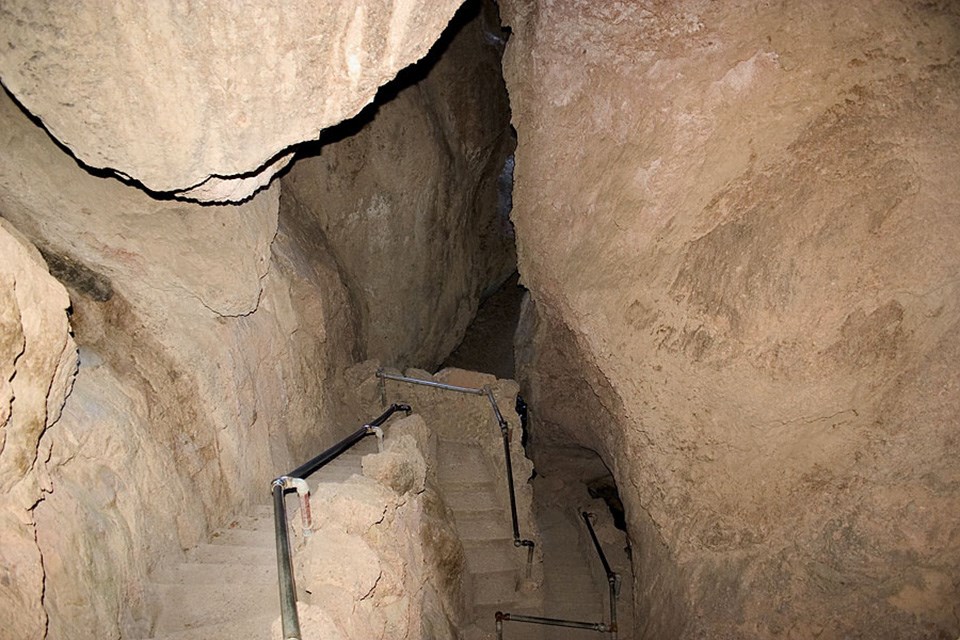
Bear Gulch Cave at Pinnacles National Park was formed by rockfall events infilling an existing canyon most likely during the last ice age. Stairs original constructed in the 1930s by the CCC, provides ease of access and leads visitors into one of the best examples of a talus cave in the National Park Service. Photo courtesy of Paul G. Johnson. IntroductionPseudokarst is a landform that occurs in many rocks, including igneous and metamorphic, and includes features such as hummocky topography, sinkhole-like closed depressions, and even caves. Pseudokarst caves form through mechanical processes rather than the chemical dissolution of bedrock that occurs in rocks like limestone. One type of pseudokarst cave forms within rubble shed from steep sided or sheer exposures of bedrock. This rocky rubble is known as talus when the size of the boulders is above a certain threshold; rubble mostly of pebble sized rocks is generally known as scree. However, geologists will often use the term interchangeably. 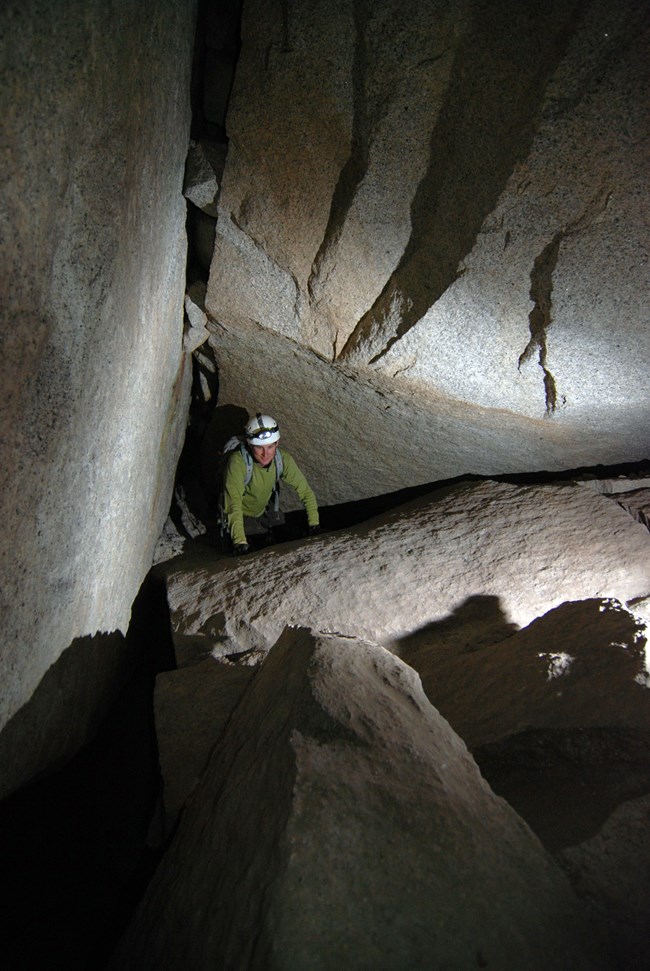
NPS photo. Talus or boulder caves can be found in areas with predominantly competent rock types, such as granites or gneiss, or any fractured rock that forms large, angular boulders. Talus caves are more commonly located in the mountainous states of the American West and the Appalachian region, but can be found throughout the US wherever appropriately sized rocky debris can accumulate as a pile. The passageways found in talus caves are highly variable and can twist and turn, alternating between tight crawls and squeezes with many entrances. Rooms can be large and some caves have been surveyed for more than a kilometer. NPS Talus CavesThe known talus caves of the National Parks are few in number but are spectacular examples of this type of pseduokarst. In Yosemite National Park, voids between large, angular blocks of granodiorite have created caves at the bases of the iconic cliffs. Short but complex passages can wind for upwards of a 100 meters or 300 feet though the vast rubble piles. In steep, mountainous areas, weaker rock such as rhyolite can pile up in narrow canyons and form talus caves. Pinnacles National Park in California has several talus caves that formed this way during the last ice age. Tectonic fractures and narrow canyons were filled with rhyolitic debris. Smaller rocks and gravels were removed by flowing water leaving large boulders wedged in place and forming a series of interconnected voids or rooms. The talus caves at Pinnacles are known for some of the largest room-sizes in the US. These can be explored by trails and stairs constructed by members of the Civilian Conservation Corps during the 1930s. Talus Cave Development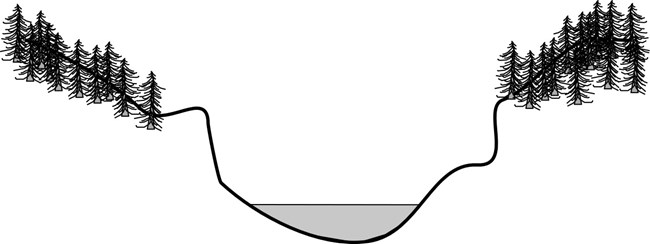
Stage 1: 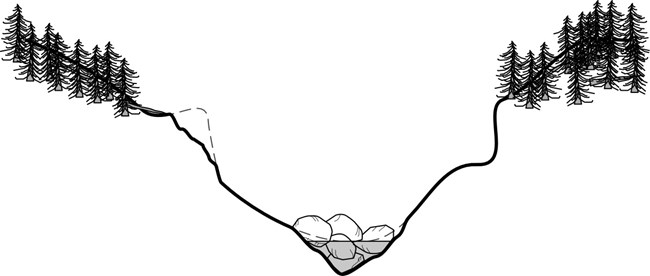
Stage 2: 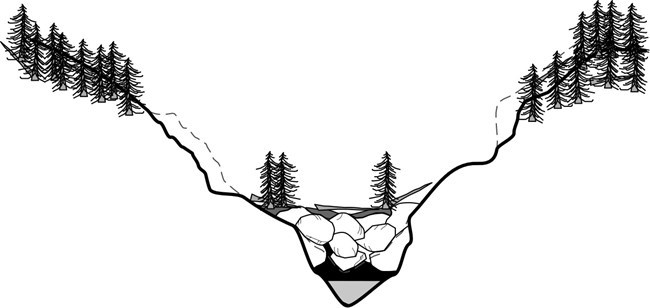
Illustrations courtesy of Paul Burger. Stage 3: Talus caves can form rapidly, sometimes from a single large rockfall event, though these young caves are very unstable. The red-hued cliffs of sandstone in the iconic desert southwest parks can form talus of sufficient size and shape to create talus caves. These caves tend to be short, tight, and small with lots of loose rocks. A large rockfall in Glen Canyon National Recreation Area in the last decade formed two such caves. One cave was obviously a danger, threatened by continued movement as boulders settle and slide from gravity and weathering. The second cave was observed to be a single space, 0.5 m (1-1/2 ft) high under a house-sized sandstone slab. 
NPS photo. 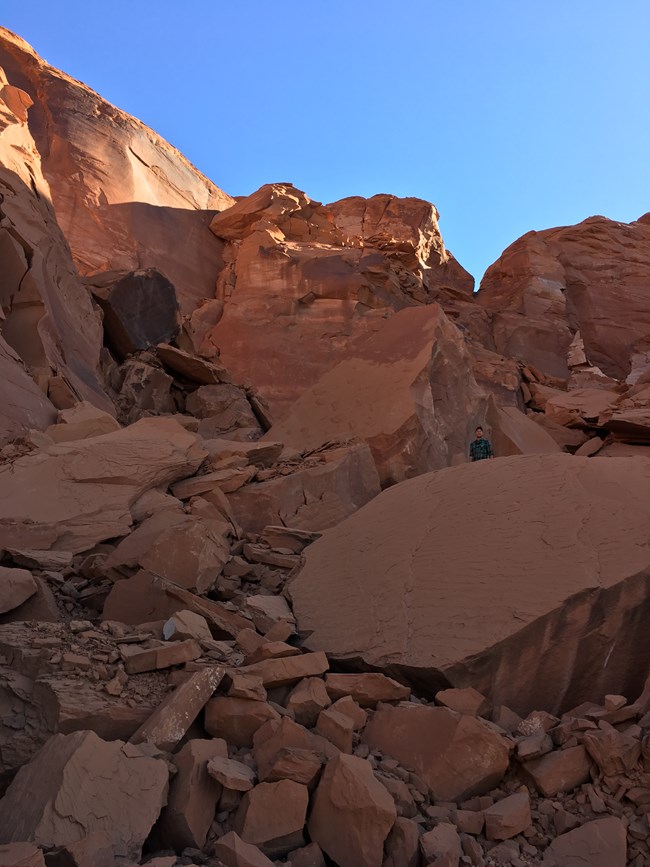
NPS photo by Jack Wood. Caves as HabitatWhile talus caves can be fun to explore, they are also important resources for wildlife. At Pinnacles National Park bats, including endangered Townsend’s Big-eared Bats, roost together within talus caves. The small talus caves at Glen Canyon, while hazardous to people, are already being used by bats. Guano accumulation at the entrances and the distinctive smell in the air exhaling from within, indicate that the young caves are now homes for wildlife. References
Be Geohazard AwareFind Your Park—Talus CavesThe following is a partial list of National Park Service units that include talus caves:
Other Cave TypesKarst Landscapes | Solution Caves | Lava Caves or Tubes | Sea or Litttoral Caves | Talus Caves | Ice Caves | Glacier Ice Caves Related Links |
Last updated: April 27, 2022
